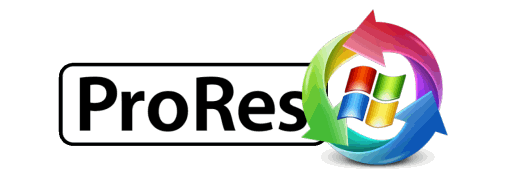
- #Prores proxy for pc 1080p
- #Prores proxy for pc pro
- #Prores proxy for pc software
- #Prores proxy for pc free
- #Prores proxy for pc windows
Both are optimized especially for use on Apple hardware. You can create "optimized media" which uses ProRes 422, or create "proxy media" which uses the ProRes 422 Proxy codec.
#Prores proxy for pc pro
Final Cut Pro XĪpple's high-end video editor (and its previous version) has two options for offline video editing. The creation of proxy files is handled in the initial Ingest procedure for importing footage into Adobe's highly capable industry-standard video editor. This vastly speeds up the workflow of transcoding raw footage, working with proxy files, and swapping back to full-resolution footage when exporting.
#Prores proxy for pc software
Some video editing software already supports offline video editing out of the box. Offline-Friendly Video Editor Recommendations In this instance, offline video editing will slow down your workflow for virtually no gain. It's also important to mention that if you have a high-performance laptop or recent desktop, you might not need to create proxy files at all. Video quality (for the duration of the edit) will take a tumble too, and you won't see crispy 4K footage while working in your editor. Since you'll need to manually point your video editor at the raw footage in the final stages of your edit, poor organization can hinder the process or throw your whole edit out the window. You can manually create these files, but careful labeling and neat organization is essential.
#Prores proxy for pc free
Many free or cheap video editors have yet to support offline video editing in their workflows. This includes big names like Adobe Premiere Pro and Apple's Final Cut Pro X. It's also best to edit offline in a non-linear editor (NLE) that automates the process. Depending on how long your video is, and how much footage you're working with, this can take a while.

Offline video editing can make a world of difference, but here's what you should know before you get started.īut there are downsides to the workflow too, notably the time involved in the transcoding process.īefore starting with an edit, you need to transcode your files to an adequate size. We won't cover intermediates in this article, since they aren't relevant in non-professional video workflows. Intermediates sit somewhere between low-quality proxy media and original quality raw files. Proxy files aren't the same as intermediates, which is another term you'll see mentioned in many offline video editing workflow tutorials. Color grading your footage, or applying post-processing effects like warp stabilization, can also significantly impact performance. Even machines that don't struggle with 4K playback can choke under load when editing multiple files at once. Some video editors are particularly resource-intensive, requiring a lot of RAM and a healthy scratch disk. If your computer is old, mid-tier, or designed purely for web browsing and spreadsheets, offline video editing can be a game changer. When you're ready to export, you replace the proxy files with their corresponding raw files. You essentially create low-quality copies of your high-quality raw footage, then use those low-quality "proxy files" during the editing process. Proxy editing, also known as offline editing, is a technique used in video editing to make large files more manageable. That said, with a bit of preparation, the right video editor, and offline video editing, you'll be able to edit 4K footage on nearly any machine. Even brand-new mid-range laptops can still struggle to play 4K files, let alone edit and grade.
#Prores proxy for pc 1080p
The added resolution gives you more options when editing your footage, and it'll still look great in years when 1080p is old news.īut you might not be able to edit high-resolution video footage on your current hardware. So just don't bother with prores anymore, unless I'm given it by a client.If you have a 4K-capable camera or smartphone, it makes a lot of sense to shoot all your videos in 4K quality.

Also, I myself haven't been able to export out reliable prores files from windows, I can make some that shows all the same encoding stats as a prores made in an AJA Ki Pro, but still won't play back in an AJA, and that have issues with broadcasting houses. So I would advice caution if working with large files, smaller files aren't an issue, like 2-10 GB.

Basically a 100GB file can lock up my computer for 20-30 min.
#Prores proxy for pc windows
The files themselves plays back fine nowdays in premiere pro or VLC, its just that when they are caching (no idea why windows gets so fooled by the file) it drains 100% of the RAM (I got 32GB ram.).

80-200 GB each, then windows more or less goes crazy while trying to cache the files for preview (so I have to turn off in Windows not to preview files I click). I edit highlights for golf tournaments now and then and when working with prores files that are larger, i.e. I have "huge" problems with large prores files in windows.


 0 kommentar(er)
0 kommentar(er)
